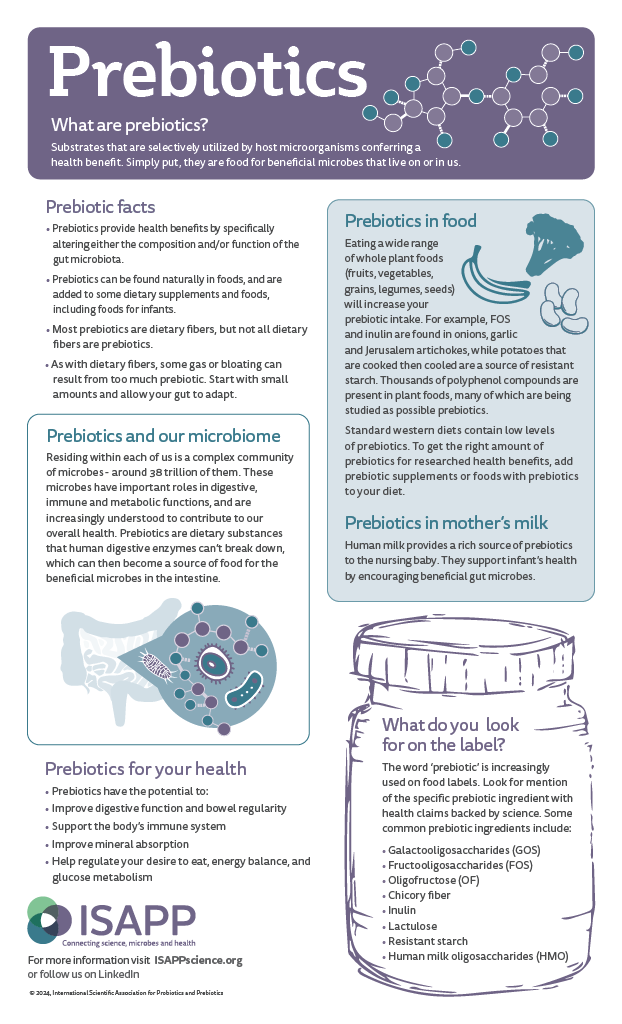Prebiotics
In contrast with probiotics, prebiotics are non-living substances. In simple terms, prebiotics are food for beneficial microbes that live on or within your body. Prebiotics provide health benefits specifically by changing your body’s microbial community — most commonly, the community that lives in your digestive tract. Prebiotics can be found naturally in foods, or they can be isolated and delivered in dietary supplements or foods.




